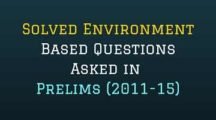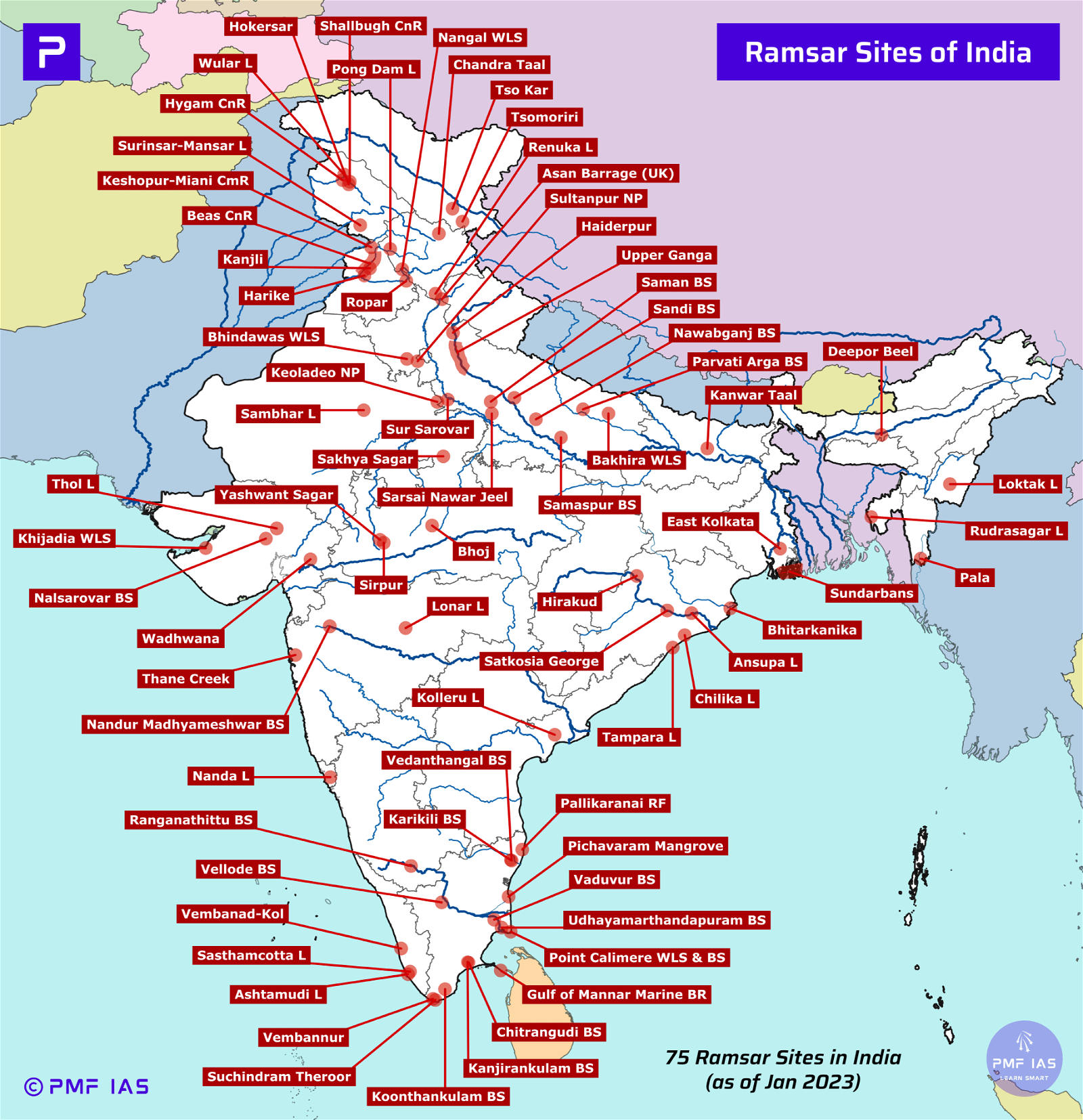
Indian Vulture Crisis Due to Diclofenac, Vulture Safety Zones
Subscribe to Never Miss an Important Update! Assured Discounts on New Products!
Must Join PMF IAS Telegram Channel & PMF IAS History Telegram Channel
Last updated on April 26, 2024 7:22 PM
Indian Vulture Crisis
- India is most favourable region for Vultures: Hindus do not eat cows, which they consider sacred, and when a cow dies, it is left to be fed on by vultures.
- India has a high species diversity and hence vultures get lot of food.
- Nine species of vulture can be found living in India. But today, most are in danger of extinction due to a veterinary drug called diclofenac (vultures do not have a particular enzyme to break down diclofenac).
Diclofenac
- Diclofenac is a common anti-inflammatory drug administered to livestock and is used to treat the symptoms of inflammation, fevers and/or pain associated with disease or wounds.
- Diclofenac leads to renal failure in vultures damaging their excretory system (direct inhibition of uric acid secretion in vultures).
- Gyps species were the most affected by diclofenac.
- The population of the White-rumped vulture (Gyps bengalensis) fell 99.7% between 1993 and 2002.
- The populations of the Indian vulture (Gyps indicus) and the slender-billed vulture (Gyps tenuirostris) fell 97.4%.
- The percentages differ slightly because the white-rumped vulture is more sensitive to diclofenac than the other two species, but all three were in danger of extinction.
- Two other species of Gyps, the Himalayan vulture (Gyps himalayensis) and the Eurasian griffon (Gyps fulvus) were less affected because they come to India only in winters
- They are exclusively mountain-dwelling and hence less vulnerable to diclofenac contamination.
Diclofenac Alternative
- The drug was banned for veterinary use in India in March 2006.
- A replacement drug was quickly developed and proposed after tests on vultures in captivity: meloxicam.
- Meloxicam affects cattle the same way as diclofenac but is harmless for vultures.
- Diclofenac for human use was still being diverted into veterinary uses through black markets in certain parts of India.
Consequences of Depopulation of Vultures
- Vultures previously played an important role in public sanitation in India and their disappearance has resulted in an explosion of rats and wild dogs and the spread of diseases resulting in an estimated cost of up to ₹1700 billion (US$25 billion) (as of 2015).
- The carcasses formerly eaten by vultures’ rot in village fields leading to contaminated drinking water.
- These newly abundant scavengers are not as efficient as vultures. A vulture’s metabolism is a true “dead-end” for pathogens, but dogs and rats become carriers of the pathogens.
- The mammals also carry diseases from rotting carcasses such as rabies, anthrax, plague etc. and are indirectly responsible for thousands of human deaths.
Conservation Status of India Vultures (As of March 2019]
Critically Endangered
- White-Rumped Vulture (Gyps bengalensis)
- White-Backed Vulture (Gyps africanus)
- Ruppell’s Vulture (Gyps rueppellii)
- Indian Vulture (Gyps indicus)
- Slender-Billed Vulture (Gyps tenuirostris)
Endangered
- Cape Vulture (Gyps coprotheres)
Near Threatened
- Himalayan Vulture (Gyps himalayensis)
Least Concern
- Griffon Vulture (Gyps fulvus)
Critically Endangered
White-Rumped Vulture (Gyps bengalensis)

- The white-rumped vulture was very common especially in the Gangetic plains of India, and often seen nesting on the avenue trees within large cities in the region.
White-Backed Vulture (Gyps africanus)

Ruppell’s Vulture (Gyps rueppellii)
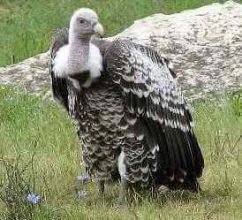
Indian Vulture (Gyps indicus)

- The Indian vulture is found only to the south of the Ganges and breeds on cliffs.
Slender-Billed Vulture (Gyps tenuirostris)
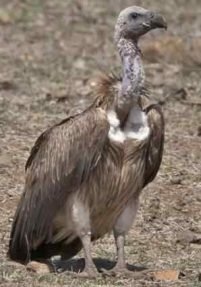
- The slender-billed vulture is found along the Sub-Himalayan regions and into Southeast Asia.
Endangered
Cape Vulture (Gyps coprotheres)

Near Threatened
Himalayan Vulture (Gyps himalayensis)
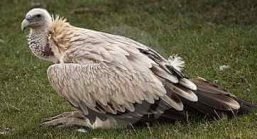
- Found along the Himalayas and the adjoining Tibetan Plateau
Least Concern
Griffon Vulture (Gyps fulvus)

Vulture Safety Zones
- Aim of developing VSZs is to establish targeted awareness activities surrounding 150 km radius of vultures’ colonies so that no diclofenac or the veterinary toxic drugs are found in cattle carcasses.
- The VSZ is spread around in several hundred kilometres covering the Jim Corbett in Uttarakhand, Dudhwa and Kartamiaghat forest reserves in UP which is adjoining the Indo-Nepal border.
- Nepal has already set up VSZ on the Indian borders.
VSZ’s provide:
- A safe source of food that is free of contamination from veterinary drugs, poisons and other agricultural chemicals.
- A place where vultures can feed free from human disturbances.
- Extra food close to breeding colonies, this helps to increase their breeding success by improving the survival chances of the young vultures.
Vulture Restaurants
- At this restaurant, tables are reserved only for the unique and rare vultures by Maharashtra and Punjab forest departments.
Last updated on April 26, 2024 7:22 PM





